
The Upanishads are late Vedic and post-Vedic Sanskrit texts that "document the transition from the archaic ritualism of the Veda into new religious ideas and institutions" and the emergence of the central religious concepts of Hinduism. They are the most recent addition to the Vedas, the oldest scriptures of Hinduism, and deal with meditation, philosophy, consciousness, and ontological knowledge. Earlier parts of the Vedas dealt with mantras, benedictions, rituals, ceremonies, and sacrifices.
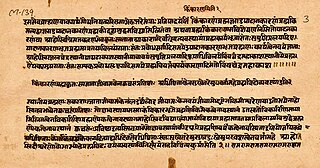
The Shvetashvatara Upanishad is an ancient Sanskrit text embedded in the Yajurveda. It is listed as number 14 in the Muktika canon of 108 Upanishads. The Upanishad contains 113 mantras or verses in six chapters.
Muktikā refers to the Sanskrit-language anthology of a canon of 108 Upaniṣhads. The date of composition of each is unknown, with the oldest probably from about 800 BCE. The Principal Upanishads were composed in the 1st millennium BCE, most Yoga Upanishads composed probably from the 100 BCE to 300 CE period, and seven of the Sannyasa Upanishads composed before the 3rd century CE.

The Tejobindu Upanishad is a minor Upanishad in the corpus of Upanishadic texts of Hinduism. It is one of the five Bindu Upanishads, all attached to the Atharvaveda, and one of twenty Yoga Upanishads in the four Vedas.
Brahma Upanishad is an ancient Sanskrit text and one of the minor Upanishads of Hinduism. It is among the 32 Upanishads attached to the Krishna Yajurveda, and classified as one of the 19 Sannyasa Upanishads.

The Atharvashikha Upanishad is a Sanskrit text that is one of the minor Upanishads of Hinduism. It is among the 31 Upanishads associated with the Atharvaveda. It is classified as a Shaiva Upanishad, focussing on the destroyer god, Shiva.

The Kalagni Rudra Upanishad, is one of the minor Upanishads of Hinduism, written in the Sanskrit language. It is attached to the Krishna Yajurveda. It is one of 14 Shaiva Upanishads.
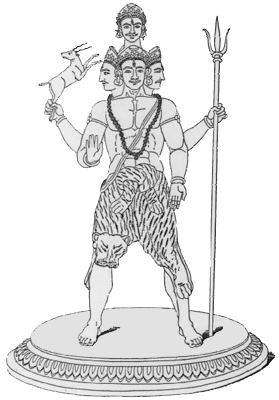
The Atharvashiras Upanishad is a Sanskrit text that is one of the minor Upanishads of Hinduism. It is among the 31 Upanishads associated with the Atharvaveda. It is classified as a Shaiva Upanishad focussed on god Rudra.
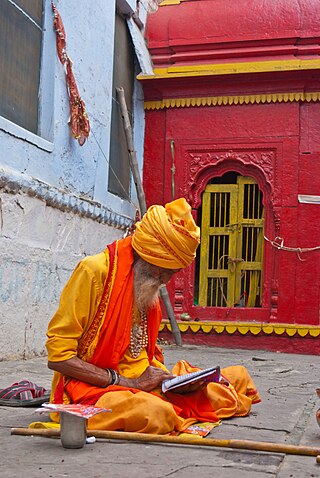
The Bhikshuka Upanishad, also known as Bhikshukopanishad, is one of the minor Upanishads of Hinduism and is written in Sanskrit.

The Devi Upanishad, is one of the minor Upanishads of Hinduism and a text composed in Sanskrit. It is one of the 19 Upanishads attached to the Atharvaveda, and is classified as one of the eight Shakta Upanishads. It is, as an Upanishad, a part of the corpus of Vedanta literature collection that present the philosophical concepts of Hinduism.

The Sharabha Upanishad is a minor Upanishads of the Atharva Veda. In a Telugu language anthology of 108 Upanishads of the Muktika in the modern era, narrated by Rama to Hanuman, it is listed at serial number 50. It is one of the 14 Shaiva Upanishads.

The Pranagnihotra Upanishad is a minor Upanishad of Hinduism. In the anthology of 108 Upanishads of the Muktika canon, narrated by Rama to Hanuman, it is listed at number 94. The Sanskrit text is one of the 22 Samanya Upanishads, part of the Vedanta school of Hindu philosophy literature and is attached to the Atharva Veda. The Upanishad comprises 23 verses.
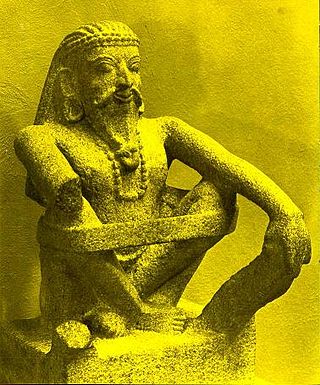
The Mantrika Upanishad is a minor Upanishad of Hinduism. The Sanskrit text is one of the 22 Samanya Upanishads, is part of the Vedanta and Yoga schools of Hindu philosophy literature, and is one of 19 Upanishads attached to the Shukla Yajurveda. In the Muktika canon, narrated by Rama to Hanuman, it is listed at number 32 in the anthology of 108 Upanishads.
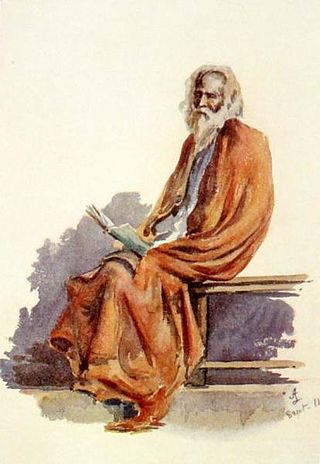
The Jabala Upanishad, also called Jabalopanisad, is a minor Upanishad of Hinduism. The Sanskrit text is one of the 20 Sannyasa Upanishads, and is attached to the Shukla Yajurveda.

The Kundika Upanishad, also known as Kundikopanishad, is an ancient text and a minor Upanishad of Hinduism. It is one of the 19 Sannyasa Upanishads, and is one of the 16 Upanishads attached to the Sama Veda.
Yoga Upanishads are a group of minor Upanishads of Hinduism related to Yoga. There are twenty Yoga Upanishads in the anthology of 108 Upanishads listed in the Muktika anthology. The Yoga Upanishads, along with other minor Upanishads, are generally classified separate from the thirteen major Principal Upanishads considered to be more ancient and from the Vedic tradition.
Shakta Upanishads are a group of minor Upanishads of Hinduism related to the Shaktism theology of a Goddess (Devi) as the Supreme Being. There are 8 Shakta Upanishads in the Muktika anthology of 108 Upanishads. They, along with other minor Upanishads, are generally classified separate from the thirteen major Principal Upanishads considered to be from the ancient Vedic tradition.
Samanya Upanishads or Samanya Vedanta Upanishads are minor Upanishads of Hinduism that are of a generic nature. They were composed later and are classified separate from the thirteen major Principal Upanishads considered to be more ancient and connected to the Vedic tradition.

The Vaishnava Upanishads are minor Upanishads of Hinduism, related to Vishnu theology (Vaishnavism). There are 14 Vaishnava Upanishads in the Muktika anthology of 108 Upanishads. They, along with other minor Upanishads, are generally classified separate from the thirteen major Principal Upanishads considered to be more ancient and from the Vedic tradition.
Sannyasa Upanishads are a group of minor Upanishads of Hinduism related to the renunciation, monastic practice and asceticism. There are 19 Sannyasa Upanishads in the Muktika anthology of 108 Upanishads. They, along with other minor Upanishads, are generally classified separately from the thirteen major Principal Upanishads considered to be from the ancient Vedic tradition.














